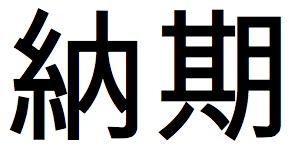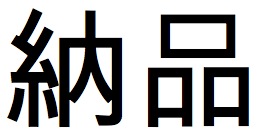The massive amounts of English required for grad school are slowly wearing down my Japanese ability, but I’ve found a couple of conversation partners (one who just returned to New Orleans) and I still get translation work every now and then (and some of those times I can actually fit it in my schedule). I recently did a little work for a company, and just this past Monday a check finally came through for some work I did over the summer. Both of these events reminded me of a critical translation/project management vocab word – 請求書 (せいきゅうしょ).
To break this fool down literally, first we have to chop off the suffix – 書. You probably recognize this as the character that means “write”; it gets tacked on to the end of almost any document. 身分証明書 (ID). 説明書 (instructions). 契約書 (contract). 計画書 (plan). I could go on for a while. So we have a document of a 請求. If we look at the different types of kanji compounds, I believe this is a combination of two different synonyms. Both 請 and 求 mean, loosely, “to ask for, to request,” so the combination together means the same thing – to request. What are we requesting? Payment, of course! We’ve done all the hard work. We’ve looked up words (not too many). We’ve Googled mercilessly and left comments where we couldn’t find an answer about something in the text (not too many). We’ve revised (quite a bit to smooth out our awkward translationing). And now we’ve finally sent the work in. Time to get paid. 請求書, in more familiar English, means “invoice.”
First I’ll address this from a translator’s perspective. Most companies want invoices by the end of the month, so you can save it until then or you can submit the invoice along with the finished translation. I always take the latter course so I don’t forget. If you get a lot of work from a company, then you can save all your invoices and send them together at the end of the month. Companies may charge a transfer fee of $10 or so, and if you are a yen pincher, then you could try and combine several months’ worth of invoices into a single month. Be careful, though – some companies ask that invoices be submitted within a certain amount of time after the translation is completed.
You want to make sure you have all your bank info on the invoice along with contact info and the job number (if you were given one). As a translator, you should expect to get paid a month or two after you submit your invoice. If you finish your work early in the month, then you may end up waiting as many as three months.
As a project manager, when you receive an invoice, the first thing you should do is print it out. At least that’s how we handled it where I worked. Whether or not you print it may be up to the company policy, but you should immediately take the first step toward processing the invoice. Forgetting to file a translator’s invoice properly is one of the most embarrassing things you can do – trust me. Translators help you look good (or at least try to help you look good), and it pays to take care of them. Once I printed and filed the invoice, I always confirmed this fact with the translator so they could have peace of mind.
ちゃんと請求しよう!




